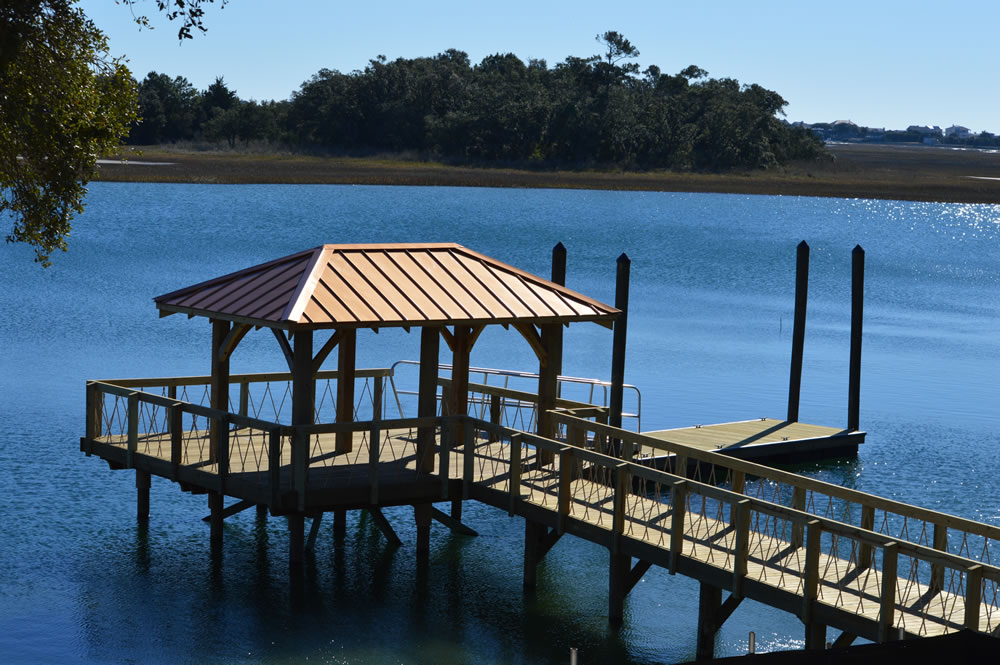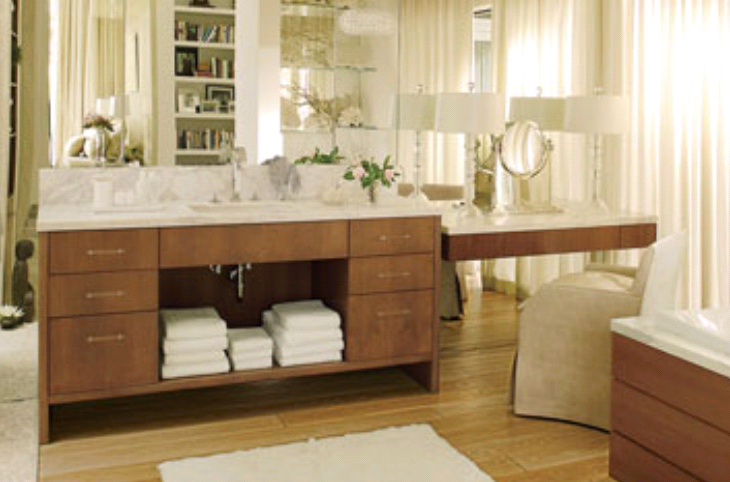Nature’s fury is both awe-inspiring and terrifying. As the storm season approaches, the looming threat of high winds, torrential rains, and the sheer force of nature becomes palpable. For homeowners with outdoor structures like gazebos or those fortunate to have piers by the waterfront, this period can be particularly nerve-wracking. These structures, which often serve as places of relaxation and enjoyment during calmer times, can quickly become vulnerable points if not adequately prepared for the onslaught of a storm. The damage caused not only translates to financial loss but can also mean the loss of many cherished memories associated with these spaces. Therefore, it’s not just about preparing a structure; it’s about safeguarding the moments and experiences tied to it. Here’s a comprehensive guide on how to fortify your pier or gazebo, ensuring they remain standing as silent witnesses to nature’s power, rather than its victims.
Storm-Proofing Your Gazebo
Gazebos, often the centerpiece of gardens and backyards, are places where families gather for celebrations, relaxation, and to enjoy nature. Ensuring their safety during storm season is paramount not just for the structure’s longevity but also for the safety of those who frequent it.
- Anchoring is Key: One of the primary reasons gazebos suffer damage during storms is due to inadequate anchoring. A gust of wind can easily lift an unanchored gazebo, causing damage or even injury. Use robust anchor kits, threaded rods, and ropes to secure it firmly to the ground. If your gazebo is adjacent to a more substantial structure, like a house or another building, consider anchoring it there for added stability. Attach ropes, straps, or even chains to your gazebo’s posts to ensure they remain grounded during strong winds.
- Material Matters: The material of your gazebo plays a significant role in its resilience. Opt for durable, weather-resistant materials that can withstand both the sun’s UV rays and the onslaught of a storm. While metal frames provide strength, ensure they are coated or treated to prevent rust.
- Quality Matters: A gazebo’s resistance to wind and weather conditions is often directly proportional to its quality. While it might be tempting to save money with a cheaper option, investing in a high-quality gazebo can mean the difference between minor repairs and total replacement after a storm.
- Securing During a Hurricane: Hurricanes bring a combination of challenges, from torrential rain to flying debris. During such times, tie the gazebo framework firmly to the ground using bungee cords or heavy-duty ropes. Remove any loose accessories like cushions, tables, or decorations to prevent them from becoming dangerous projectiles. If your gazebo has fabric elements, ensure they are tightly secured or consider removing them. Covering the gazebo with a waterproof tarp can also help prevent water damage.
- Regular Maintenance: Like any structure, regular checks and maintenance can increase your gazebo’s lifespan and storm resistance. Check for any loose parts, wear and tear, or potential weak points and address them before storm season hits.
- Gazebo on Pavers: If your gazebo is situated on pavers, it requires additional attention. Pavers can become slippery when wet, and water can erode the ground beneath them. To secure a gazebo on pavers, drill holes and insert concrete anchors for added stability. Use lag bolts and washers to tie the gazebo down, ensuring they are tightened adequately.
By giving your gazebo the attention it deserves, you can ensure it remains a safe and enjoyable space, even after the storm has passed.
Storm-Proofing Your Dock or Pier
Docks and piers are more than just structures extending into the water; they are gateways to the vastness of the seas and lakes, places of reflection, and often hold sentimental value for many. Given their exposure, they are directly in the line of fire when storms hit, making their preparation crucial.
- Flow-through Decking: Traditional decking can act like a sail in strong winds, catching and holding the wind, which can lead to uplift or even complete detachment. Flow-through decking is designed to allow water and air to pass through, reducing the risk of uplift during storm surges. Additionally, this design has an environmental benefit, allowing sunlight to penetrate, which can be crucial for marine ecosystems below.
- Embrace Composite Materials: The longevity of a dock or pier is often determined by the materials used in its construction. While wood has a timeless appeal, it’s susceptible to rot, especially in saltwater environments. Composite materials, on the other hand, offer a blend of durability and aesthetics. They resist the corrosive effects of saltwater and don’t splinter or warp like wood. Moreover, while composites maintain their integrity, wood can become a weak point in mixed-material constructions.
- Fiberglass Composite Pilings: Traditional pilings, whether they’re made of wood, concrete, or steel, have their set of challenges. Wood rots, concrete can crumble, and steel can rust. Fiberglass composite pilings are revolutionizing waterfront constructions. They are not only stronger than their traditional counterparts but also offer flexibility. This means that during a storm, instead of snapping or breaking, they can bend and absorb some of the force, reducing overall damage. Pearson Pilings is a notable name in this sector, known for their engineering and quality.
- Regular Inspections: The marine environment is harsh, with constant moisture, salt, and changing temperatures. This can lead to wear and tear not immediately visible to the casual observer. Regularly inspect your dock or pier for signs of damage, corrosion, or other issues. Addressing small problems before they become significant can save money and prevent catastrophic failures during storms.
- Secure Loose Items: Much like with gazebos, any loose items on your dock or pier can become projectiles during a storm. Ensure that benches, boat tie-ups, fishing equipment, and other accessories are securely fastened or stored away.
- Consider Breakaway Panels: For larger structures or those in particularly storm-prone areas, consider installing breakaway panels. These panels are designed to break away cleanly during extreme storm surges, allowing water to flow through and reducing the overall force on the main structure.
By taking these steps and investing in the right materials and designs, you can ensure that your dock or pier remains a cherished part of your waterfront property, even after the fiercest of storms.
Storm Preparedness: Ensuring Gazebo and Pier Safety
As the adage goes, “An ounce of prevention is worth a pound of cure.” This couldn’t be truer when it comes to safeguarding our cherished outdoor structures like gazebos, docks, and piers. These structures, often built with care, investment in a high-quality marine construction company, and a vision of creating lasting memories, become integral parts of our lives. They witness countless sunsets, family gatherings, moments of solitude, and the simple joys of nature.
However, the unpredictable wrath of nature, especially during storm seasons, can pose significant threats. While we cannot control the forces of nature, we can certainly equip ourselves and our structures to withstand them. By implementing the strategies and precautions outlined above, not only do we enhance the longevity of our gazebos and piers, but we also ensure the safety of our loved ones and the environment.
It’s essential to remember that preparation is a continuous process. Regular maintenance, timely inspections, and staying updated with the latest in storm-proofing technologies can make all the difference when the next storm hits. In doing so, we ensure that these structures remain standing as symbols of resilience, adaptability, and our enduring bond with nature.
So, as the storm clouds gather, let them serve as a reminder not of impending destruction, but of our preparedness, foresight, and the enduring strength of the structures that have been built with love and care.





